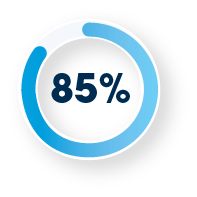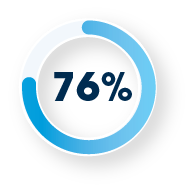How Patient-Centricity Is Redefining Experiences in Pharma
Putting patients first and employing the right tools and data can help the industry evolve and thrive.


In a recent study by Accenture, 85% of companies are raising their investment in patient-centric capabilities over the next 18 months.*
Chapter 1
Industry Transformation Driving Improved Patient Experiences
Evolve to stay ahead of challenges
A shift to value and outcomes
Patients want to connect

Research among patients shows that 76% expect pharmaceutical organisations to provide them with tools and support services, and physicians believe these programs can help improve outcomes.*
Personalised medicine and digital technology
The growth of specialty drugs and personalised therapies like gene therapy, cell therapy like CAR-T, and cancer vaccines requires a transformation of the patient services, programs, and reimbursement models used today. The personalisation required will force organisations to reinvent their business models and think differently about how their organisation needs to connect with patients, providers, and payers.
At the same time, digital technology is pushing the entire industry to rethink how to benefit from the innovations unfolding around them. Thinking “beyond the pill” is the mindset of not just the future but of the here and now. That means providing digital tools to help patients with diagnosis and adherence.

Technology Gaps Challenging Patient-Centricity in Healthcare
Get closer to a patient-centric model and prepare your business systems for the future.
Evaluate bringing patient programs in-house
Personalising the patient experience
Connect the data dots

Crafting a Comprehensive Patient-Centric Approach with Salesforce
Learn how to evolve your systems, unify patient data, enhance your patient programs.
How do you evolve your systems to keep pace with the disruptive transformation surrounding your business and drive patient-centricity? How do you unify patient data based on consent across siloed systems? How do you get people on therapy faster and keep them on it? How do you enhance your patient programs while reducing operational costs?
You need a platform with new tools that empower you to deliver therapeutic support programs that are personalised, at scale, and engage patients. In short, you need a CRM built for life sciences. Salesforce is just that.
Salesforce Connect the Patient Experience solution enables pharmaceutical companies to deliver personalised engagement and support programs across a single platform to reduce operational costs while helping patients proactively manage their disease and navigate their health journey.
Therapeutic-specific support programs at scale
Link disparate systems and use a single platform to lower the operational costs of maintaining patient services and programs across brands and therapeutic areas.
- Single platform: Surface key patient and provider data from Health Cloud alongside other systems to support full-scale patient support portals for real-time therapy assistance.
- Out-of-the-box, certified connectivity: Link key life sciences systems to ensure reliable real-time patient support from services teams, capture real-world data, and obtain reporting of post-launch regulatory data.
- API-led: MuleSoft’s approach to connectivity enables IT teams to build and share reusable assets, allowing similar patient support programs for different regional and global needs to be established two to three times faster, on average.
Create connected, personalised patient experiences
- Guided program enrollment: Create journeys to improve the patient experience with a step-by-step enrollment guide from Journey Builder for patient services teams.
- Digital informed consent management: Easily manage patient enrollment and consent forms from anywhere. Collaborate with teams across care programs and capture e-signatures in person or remotely on a tablet or mobile device.
- Omni-channel patient services: Empower patients to access program or educational information and support on their preferred channel and right from their mobile device.
Built-in analytics and AI
Receive predictive recommendations in Health Cloud to improve support programs and gain better access to real-world data to achieve targeted patient outcomes.
- Embedded analytics: Surface key metrics and KPIs through visualisations embedded directly within the CRM.
- Intelligent predictions: Understand the key factors that impact a patient’s time-to-therapy overall and receive AI-driven recommendations surfaced by Next Best Action. This enables proactive steps to minimise the time between an HCP treatment prescription and the onset of patient therapy.
- Actionability at the point of insight: Use the Action Framework to take steps directly within the solution and surface the next AI-driven prediction to further optimise the patient experience.
- Patient experience notifications: Receive immediate notifications via email or mobile to track the customer experience — for example, if a customer’s time to therapy exceeds a certain threshold.






